'It's rare and it's scary.' Dark spot on your fingernail could mean cancer
Published in Health & Fitness
If you are staring at a dark spot under your fingernail, you may want to see a dermatologist. It could be a form of melanoma.
“It is rare, and it’s scary that it’s rare, because a lot of people would not think to check their nails,” said Lauren Koltcz, whom the Cleveland Clinic featured after doctors operated to cut out a malignancy under her fingernail as well as surrounding tissue to remove any remaining cancer cells.
Subungual melanoma, which appears under fingernails and toenails, is a rare but serious form of skin cancer that typically isn’t caused by sun exposure. It usually appears as a dark line or discoloration under the nail. This type of melanoma affects people of all races, ethnicities and ages. If caught early and the melanoma is just in the upper layer of the skin, the prognosis is better and treatment is less invasive.
Koltcz said she initially attributed the brown mark on her nail to a vitamin deficiency and dismissed it. Now she is grateful she saw a doctor and caught her melanoma early enough to be surgically removed.
Subungel is a type of acral lentiginous melanoma that develops in non-sun-exposed body areas, such as the palms and soles. “It’s more rare, but it’s also potentially more aggressive,” said Dr. Paul Benedetto, a dermatologist and Mohs surgeon with the Cleveland Clinic Florida.
“It’s not entirely clear if this form of melanoma is inherently more aggressive or diagnosed at later stages,” he said. “No one is really looking for them or clear on the signs they are seeing.”
Benedetto has several patients who arrive in his Coral Springs office each year with melanoma under their finger or toenails. He also has cases of acral lentiginous melanoma, noting that on the feet or hands, even a small brown dot can be skin cancer.
“That’s why you need a full skin check from head to toe in your birthday suit,” he said.
On Mother’s Day, Amanda Mcclements posted on Instagram about her mother’s similar experience with a discoloration under her thumbnail that looked like she had slammed it in a door. The spot turned out to be subungual melanoma. She since has undergone a partial amputation, lymphadenectomy and continued immunotherapy, according to the post.
“I wish I’d known the signs of this cancer sooner so I’m sharing in hopes of spreading awareness,” Mcclements wrote.
Dermatologists say regular screening is important to help prevent and detect all types of melanoma and skin cancer.
Miami Cancer Institute’s Skin Cancer Clinic can do a whole-body scan with the Vectra 3D, a machine that takes detailed images and creates a body map to allow experts to study and monitor lesions and other skin abnormalities and accurately assess changes over time. The Vectra can also take close-up dermoscopy photos of suspicious lesions for even more detailed monitoring and for detecting skin cancer at an early stage.
Generally, insurance does not cover the cost of Vectra 3D imaging, which runs about $595. Recent legislative efforts in Florida to require insurers to pay for annual skin cancer checks failed.
Hidden ‘forever chemicals’ in wrist bands
Fitness buffs love their smartwatches and regularly wear them to workout. However, new research has found that the wristbands on smartwatches and fitness trackers might expose wearers to the harmful “forever chemicals” known as PFAS.
Some bands are made with fluoroelastomer, a synthetic rubber known for its resistance to sweat. New University of Notre Dame research found the forever chemical perfluorohexanoic acid, or PFHxA, in 22 fitness bands and smartwatches made with fluoroelastomer. Separate recent research suggests that PFAS may be absorbed by the skin and increase the risk of cancer. Researchers discovered that pricier bands over $30 actually had higher levels of fluorine, which indicates the presence of PFAS. The Environmental Working Group, a nonprofit dedicated to improving human health, suggests wearing silicone bands instead, avoiding watch bands made with fluoroelastomers, limiting wear time, and supporting national efforts to push for safer alternatives to PFAS in products.
Possible cure for long COVID
Dr. Nancy Klimas at Nova Southeastern University in Davie, Florida, is searching for a cure for long COVID, a condition with as many as 200 symptoms. She hopes to enroll as many as 100 people in a multi-year study at NSU to test whether the monoclonal antibody sipavibart could be a treatment. Sipavibart is a long-acting monoclonal antibody treatment that has been used to prevent COVID-19 in immunocompromised individuals.
“Like many multi-symptom, post-viral conditions, long COVID is incredibly complicated and thus little understood,” said Klimas, director of the Institute for Neuro-lmmune Medicine at NSU. “Finding a treatment will be life-changing for patients suffering from the myriad symptoms of long COVID.”
Long COVID refers to the ongoing health problems that some people experience after they have been infected with COVID-19. These symptoms last at least three months after the initial infection and range from muscle aches and joint pain to brain fog and fatigue. It is estimated that about 65 million people worldwide are affected by long COVID.
“The health impacts of the disease can be debilitating,” said Dr. John Reed, CEO of Schmidt Initiative for Long Covid, which is funding the trial.
Klimas and her team will divide patients into two evenly split groups to receive infusions of either a placebo or sipavibart. They will evaluate participants every three months, checking for improvement in their symptoms. They also will create a repository of blood and other specimens from participants for further study. At this time, there are no FDA-approved drugs to treat long COVID.
Do you like your nurse? Donate in his or her honor
While hospitals nationwide struggle with nurse shortages, Holy Cross Health in Fort Lauderdale is onboarding 50 graduate nurse hires a year through its 12-month Intensive Residency Program. In 2024, the nurse residency program at Holy Cross achieved accreditation from the American Nurses Credentialing Center, signaling it meets high standards for education and patient care. “The accreditation helps us attract great candidates,” said Crystal Caruthers, nurse resident development manager.
Caruthers said the residency program’s low turnover rate of 4% and competitive admissions process prove its success. “For each cohort, we routinely see more than 180 applicants for 15 positions,” she said. “Most are from Florida.” Holy Cross typically has three cohorts of nurses in the residency program per year.
Patients who have a standout nurse at Holy Cross Health now have a way to show their appreciation.
Through a new initiative called Healing Heroes, patients who want to honor their nurses (or other medical staff) can do so with a donation of any monetary amount. Each Healing Hero gets a special pin and a personal note of gratitude acknowledging the difference they’ve made in the lives of those they serve.
“Some of the most powerful moments in healthcare happen quietly, at the bedside or during a simple conversation,” said Laura Denoux, vice president and chief development officer at Holy Cross Health. “The Healing Heroes program shines a light on those moments and gives patients a way to turn their appreciation into something enduring.”
Florida Study reveals who is at risk for OCD
Are you at risk of developing obsessive-compulsive disorder? In the largest-ever study into genetics, Florida researchers have identified ways to predict who has a higher chance of getting the psychiatric disorder. Their research may help guide better ways to treat OCD.
Previous studies have shown that OCD can run in families, but on completion of this new study, UF researchers know much more about the disorder that affects about 3 million Americans
Dr. Carol Mathews, chair of the UF College of Medicine’s Department of Psychiatry, co-led the study, which involved over 200 investigators worldwide and accumulated more than 20 years of sample collection.
“When we started early in my career, we were looking for genes that cause OCD. We thought back then that it would be one or two,” said Mathews, director of UF’s Center for OCD, Anxiety & Related Disorders. “Over time, we’ve come to realize that OCD is not a disease of a single gene or specific brain region, but rather it’s a disease of circuits and hundreds of genes, which together contribute to the development of the disorder.”
Matthews said researchers identified 30 regions of the genome and 25 genes within those regions that are likely the cause of OCD. These findings are important, she said, because with no cure for OCD, understanding the patterns of gene expression in specific brain regions could help scientists eventually develop new drugs or improve current therapies.
“Ultimately, genetic studies such as this one may be useful in scouring newly available drug databases for possible ways to ‘repurpose’ existing drugs formulated for similar targets,” she said.
Lung Association has money to spend in Florida
Broward residents raised over $440,000 to support the American Lung Association at the 29th annual Las Olas Wine and Food Festival on April 25. The proceeds help the American Lung Association serve nearly 3.3 million Floridians living with lung disease, including asthma, chronic obstructive pulmonary disease (COPD) and lung cancer.
In Florida, the American Lung Association funds four Airways Clinical Research Centers dedicated to asthma and COPD research; it funds several multi-year research grants for Florida-based researchers; it has educational webinars and support groups, like the Better Breathers Club; and it sponsors a South Florida Community Connections Speaker Series that recently focused on the future of lung cancer clinical trials.
©2025 South Florida Sun Sentinel. Visit at sun-sentinel.com. Distributed by Tribune Content Agency, LLC.
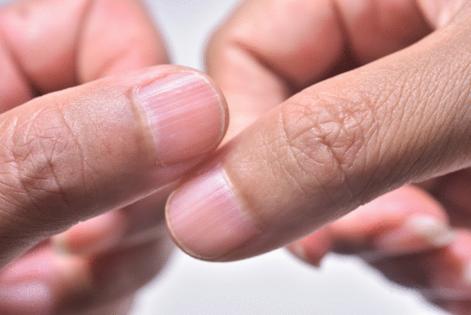
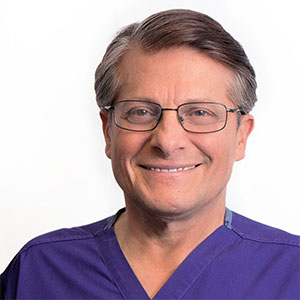
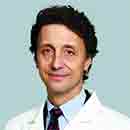
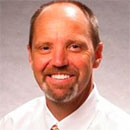



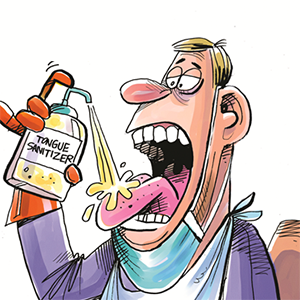


Comments